Bandes dessinées, abbreviated BDs and also referred to as Franco-Belgian comics, are comics that are usually originally in French and created for readership in France and Belgium. These countries have a long tradition in comics, separate from that of English-language comics. Belgium is a mostly bilingual country, and comics originally in Dutch are culturally a part of the world of bandes dessinées, even if the translation from French to Dutch far outweighs the other direction.

Quebec comics are French language comics produced primarily in the Canadian province of Quebec, and read both within and outside Canada, particularly in French-speaking Europe.
Solaris is a Canadian francophone science-fiction and fantasy magazine.
MensuHell is a Canadian comics fanzine published in Montréal in Québec from December 1999 to December 2008.

Michel Lacombe is a Canadian comic book artist.
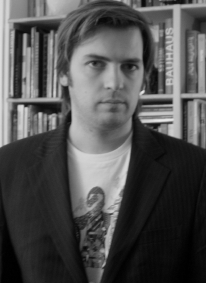
Benoît Mouchart is a French writer and curator. From 2003 to 2013, he was artistic director of the cultural programming of Angoulême International Comics Festival, in France.
Éric Thériault is a Canadian comics artist, writer, illustrator and blogger living in Montreal, Quebec, Canada.
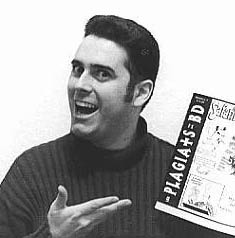
Steve Requin is a Canadian cartoonist from Beloeil, Quebec.

Pierre Fournier was a Canadian comic book writer, artist, editor, promoter and publisher. He was best known for his Michel Risque and Red Ketchup series which he co-created with his long-time friend Réal Godbout.
Stéphane Delaprée is a well-known international artist resident in Cambodia and is known for his "Happy Painting", naive paintings combining humour, poetic, and realism.
Louis Paradis is a Canadian comics artist, writer and illustrator from Montmagny, Quebec, Canada.
Canadian comics refers to comics and cartooning by citizens of Canada or permanent residents of Canada regardless of residence. Canada has two official languages, and distinct comics cultures have developed in English and French Canada. The English tends to follow American trends, and the French, Franco-Belgian ones, with little crossover between the two cultures. Canadian comics run the gamut of comics forms, including editorial cartooning, comic strips, comic books, graphic novels, and webcomics, and are published in newspapers, magazines, books, and online. They have received attention in international comics communities and have received support from the federal and provincial governments, including grants from the Canada Council for the Arts. There are comics publishers throughout the country, as well as large small press, self-publishing, and minicomics communities.
Croc was a French-language humour magazine published monthly in Montreal, Quebec, Canada from 1979 until 1995.
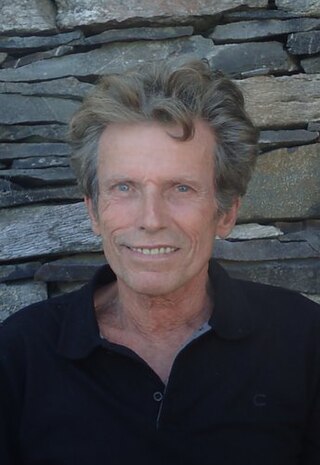
Francis Masse, known as Masse, is a French artist. In the early 1970s, he first became acquainted with his sculptures, then turned to animation and cartoon.

Zviane is a comics creator and a musician from Montréal, Quebec.
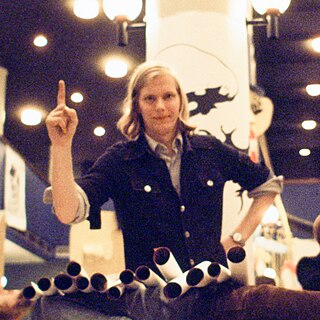
Jacques Hurtubise was a Canadian cartoonist and publisher. He was one of the founders of Croc magazine and is considered one of the most prominent figures in Quebec comics of the 1970s and 1980s.
Mira Falardeau is a French Canadian historian, professor, and author of comic strips. Falardeau has devoted works to Québec animated films, Québec comic strips and caricatures in Québec, focusing on visual humour in all its forms. She taught as a professor of cinema and communication at Laval University and the University of Ottawa. Falardeau has also curated exhibitions in the visual arts and operated a small publishing house.
Quebec humour is a vast cultural sector whose promotion and development are in part ensured by the Association des professionnels de l'industrie de l'humour (APIH).
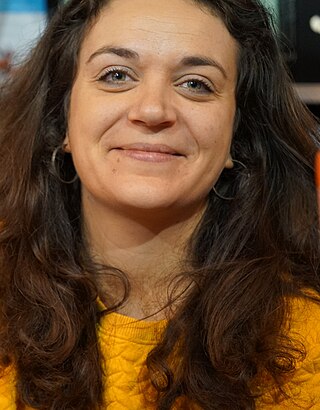
Aude Massot is a French bande dessinée comic book artist. She is a member of the Collective of female comics creators against sexism. Her non-fiction comics book with Karim Lebhour, Une saison à l'ONU, au cœur de la diplomatie mondiale (2018) was shortlisted for the France Info Prize (2019).
Léandre Bergeron is a Québécois writer, historian, linguist, and cartoonist.









